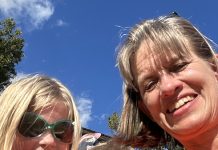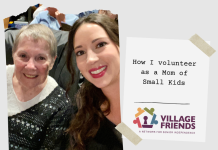 As an intern at Opelika High School, I taught a unit on bird identification. My mentor teacher in biology had twenty slides of birds common to our area and required his students to learn to identify them by sight. I had to learn them in order to teach them to my students. What I didn’t expect was how much fun it would be and that it would be one of my inspirations to sign up when I learned about the Great Backyard Bird Count a few years later.
As an intern at Opelika High School, I taught a unit on bird identification. My mentor teacher in biology had twenty slides of birds common to our area and required his students to learn to identify them by sight. I had to learn them in order to teach them to my students. What I didn’t expect was how much fun it would be and that it would be one of my inspirations to sign up when I learned about the Great Backyard Bird Count a few years later.
What is the Great Backyard Bird Count? In 1998, scientists at the Cornell Lab and the National Audubon Society started the first online citizen-science/community science project to study birds in the United States. For four days in February, before one of the annual bird migrations, people were invited to watch and count as many birds as they saw or heard during at least one fifteen minute time period. A few years later Birds Canada joined and in 2013, the project went global with the eBird project.
What if I don’t know anything about bird identification? No experience is required. Binoculars are helpful, but not necessary. (In fact, my 4 year old Little and I used a pair of plastic toy binoculars until Kent gifted me a new pair for Christmas last year.) If you want to learn more about bird identification before the count, on February 16th, there is a free webinar you can join to get started. They’ll teach you basics to ID birds, their songs, and even help you practice counting them. Just go to www.birdcount.org.
If you have a smartphone or computer, consider downloading the Merlin Bird ID and/or eBird apps. They are both free and easy to use. Merlin allows you to specify your general location and choose packets of common birds for your area. Merlin takes you step by step as you give your location, the date, general size of the bird, color/s, whether you saw it eating at a feeder or flying, etc. Once you answer these questions, it will show you pictures of common birds found where you are with descriptions of the male and female birds and you can choose the bird you saw. Then, if you want, it gives you the opportunity to report it through eBird.
With eBird, you simply start the timer and enter the type and number of birds you see. Whether you want to enter one bird or go for a walk, just stop the timer when you’re finished. You can use Merlin to identify your birds and eBird to report them. The app will also give you the choice to save your data. You can get a monthly or annual email report of your sightings if you want as well. What’s even more fun, is that if you look on the www.birdcount.org sight you can see data being added worldwide in realtime during the Great Backyard Bird Count.
Where do I go to count? You can sit in your back yard, watch birds at your feeder, go on a walk around your neighborhood or a park, go on a hike, even sit inside and watch out your window. The only requirement is that you note where you saw/heard the birds and the time of day.
When can I count? Anytime after midnight February 18th-February 21st 2022. As long as you spend at least fifteen minutes counting, you can count once or all four days.
How do I count? You can give an exact count if the number is small, or give an estimate if you can’t count every bird. If you attend the free webinar, it will allow you to practice counting birds in groups. I once identified a large group of birds and received an email asking for more information. Apparently, it was unusual for that particular bird to travel in large groups. Through a few additional emails asking more questions to confirm the sighting, I learned more about bird identification and also realized that scientists really are monitoring the site and I got to contribute to their research.
Why should I participate? For starters, it’s just fun! Second, it’s a great way to get outside-alone or as a family. Third, it’s educational, both for the kids and for the adults, as you discover the diversity of birds in your backyard or wherever you happen to be.
Consider being a part of Birdability’s map. Birdability and The National Audubon Society host a crowdsourced map which shows the accessibility features of birding sites world-wide. Information about trails such as surface, width, slope, and whether or not there are tactile components or guide ropes to help those with blindness or low vision, can be uploaded to the birdability.org site. You can add it as you walk the trail or fill out a form and add it later. For more information go to www.birdability.org or www.birdcount.org.
So, what are you and your family doing February 18th-21st? Want a fun activity? Be a part of the 25th Great Backyard Bird Count! Maybe we’ll see you outside!

Resources: www.birdcount.org and www.birdability.org
Look for the Merlin app and the eBird app in your app store











